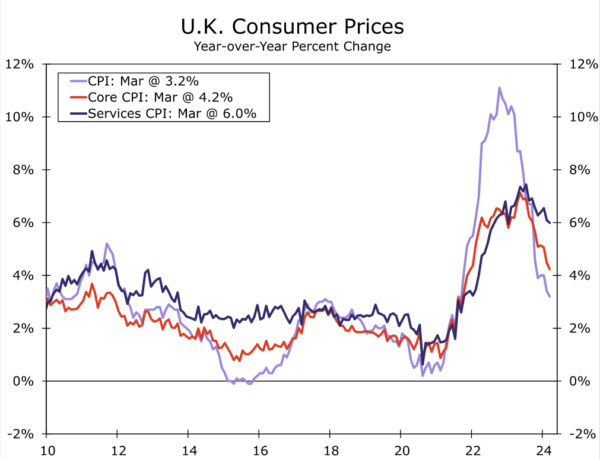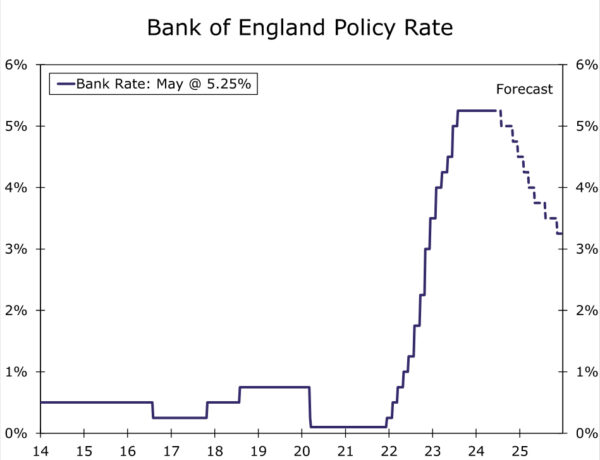
The Bank of England (BoE) decided to keep its policy rate at 5.25% during today's monetary policy announcement, but signaled a more cautious approach, indicating that rate cuts may be on the horizon.
The BoE expressed concerns that the current tight monetary policy is negatively impacting the real economy, leading to a more relaxed labor market and putting pressure on inflation. This is evident in the BoE's revised economic forecasts, with an inflation projection of 1.9% in two years, indicating a potential imminent easing of policy. Additionally, the forecast of 1.6% inflation in three years suggests that interest rates could be lowered more quickly than what is currently anticipated by the markets.
While a rate cut in June would depend on consistently positive price and wage data, as well as three more BoE policymakers switching their vote to support a cut, this scenario may not be highly likely. Therefore, the current outlook suggests that the Bank of England is expected to implement an initial 25 basis points rate cut to 5.00% at its August meeting, a move that is already fully factored in by market participants. Furthermore, it is anticipated that there will be additional 25 basis points rate cuts in November and December, totaling a 75 basis points easing this year, exceeding the 60 basis points currently priced in by the market.
The Bank of England maintains its current position and presents a cautious view.
At today’s monetary policy announcement, the Bank of England (BoE) decided to maintain its policy rate at 5.25%, a widely anticipated move by economists. While the accompanying statement did not explicitly indicate an imminent easing, there were several dovish signals pointing towards potential rate cuts in the near future. As of now, we are sticking to our prediction of an initial 25 basis point BoE rate cut in August, although we acknowledge that the possibility of an earlier move in June has grown.
Key points from the Bank of England’s announcement include the acknowledgment that the current tight monetary policy is putting pressure on real economic activity, leading to a more relaxed labor market and curbing inflationary pressures. Additionally, indicators of inflation persistence are showing the expected signs of moderation, despite remaining at elevated levels. It is significant that the BoE reiterated the need for a sustained restrictive monetary policy to bring inflation back to the 2% target in the medium term and stated that they will review how long the Bank Rate should be kept at its current level.
The decision to maintain the rates was passed with a 7-2 vote, compared to the previous meeting's 8-1 split, indicating a more dovish stance with a second policymaker now in favor of a rate cut.

The Bank of England stated that it will continue to closely monitor signs of persistent inflationary pressures and the overall resilience of the economy, including various indicators such as labor market conditions, wage growth, and services price inflation. The upcoming key U.K. data releases ahead of the Bank of England’s next monetary policy announcement on 20 June include March wage data (14 May), April CPI (22 May), April wage data (11 June), and May CPI (19 June). If these wage and price data consistently show positive results, there is a possibility that the Bank of England may consider initiating a rate cut cycle in June. However, there has been a tendency for U.K. price and wage data to disappoint during the current disinflation process. Additionally, a rate cut in June would require three policymakers to change their vote from "hold" to "cut" within one meeting, which is a significant shift. As a result, the current outlook suggests that the Bank of England may deliver an initial 25 bps rate cut to 5.00% at its August meeting, with additional 25 bps rate cuts in November and December, totaling 75 bps of easing this year. This outlook aligns with the Bank of England’s indication that rates might be lowered more quickly than what is currently expected in the market.

